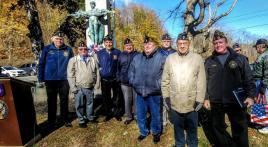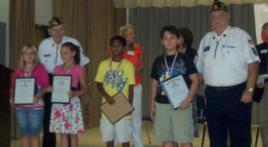This was at the end of our Quantico Officers Basic School training
I recall that in November 1965 we all went down to the Naval Amphibious Base in Little Creek, Va., for training. After a couple of days of classroom training and learning how to climb up and down landing nets that were strung down from a tower that simulated the side of a ship, we were sent aboard a Navy APC vessel for actual beach operations.
The APC steamed out to 50 miles off the coast while we prepared our living quarters aboard. It looked like tenement living, with bunks four high and clotheslines stretched between bunks to dry our clothing. Sea states were not kind to many that first night. Much vomiting occurred all over the place. Several of us went topside and slept outside in the cold. The next morning, in true Navy tradition, we were given steak and eggs for breakfast just before our departure to the beach. Landing nets were dropped over starboard side. Sea states were a little rough but okay for the early morning hour. Nonetheless it was COLD.
Old wooden hull LCVPs, called Peter boats, began to come alongside where the landing nets were deployed. In side-by-side fours, we descended down the landing nets and got into the boats.
Before we got started toward the beach, the instructor coxswain asked for a volunteer to become the “paddle man.” All eyes focused on me. The instructor coxswain told me to grab the paddle, which was a long pole with a numbered square attached to the top. He told me that I would be the first man off the boat when we hit the beach and to run and plant the pole into the sand. This would allow the “beach landing boss” to know where we landed and who we were.
Off we went. About 100 yards off the beach, the trainee coxswain hit a sandbar with a sudden jolt. Try as he did, he couldn’t get us off the sandbar, so he yelled “paddle man out!” Remember, we were all in full battle gear, including carrying our rifles. As I was about to jump into the water, the Peter boat suddenly moved forward from a large stern wave that pushed us into deeper water, but I was already in the air. Holding the paddle, I completely submerged with the pole sticking up above me. Quickly, my buddy Marines grabbed the pole and pulled me up and out of the water. I was completely soaked.
Well, we hit the beach, and I planted the pole.
For the next several hours, we continued our assault on the beach and our assigned objectives. Before returning to the ship the instructors gave us a detailed review of how we did. Moving to the beach, we found an empty Peter boat with its bow ramp down. Plowing aboard we noticed water sloshing around inside. No problem, we assumed. We’ll just have to stand in boot-high water until we got back.
As the trainee coxswain came about into the surf after closing the ramp, water began spurting like fire hoses from the base of the ramp. Boot-high water quickly became knee-high water. The coxswain turned his bilge pump on, but it didn’t work. So he instructed us to use our helmets to bail as fast as we could.
The seas had built up since we had left earlier that morning. It was “rock and roll time.” But there was our ship, not far away. As we approached the landing nets, suddenly our steering went out. So, in circles we went until the Navy guys fixed the problem.
By the time we came back to the nets, we were all freezing cold. The only way up was to lock our elbows in the net, but our hands just didn’t function from the cold, and pull ourselves up. In the first group, one Marine fell back into the boat and required a stretcher to bring him on board.
Later that night our “tenement” quarters looked like a total disaster with all of our gear, clothing and weapons hanging all over the place. And another night of vomiting. Can’t remember what was for breakfast the following morning, but I, for one, did not care.
‘Paddle Man’
November 24, 2017
Submitted by:
Lt. Col. Willard (Bill) F. Lochridge IV, Charlotte, N.C.



